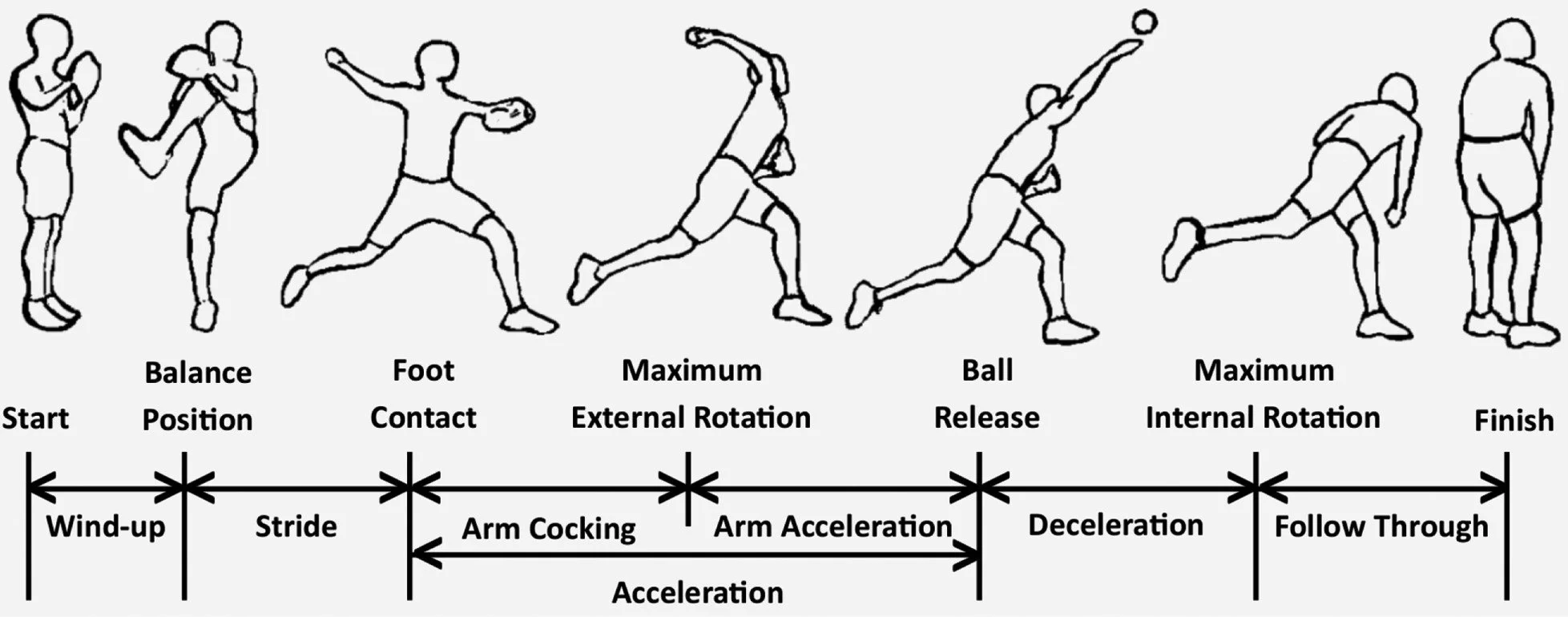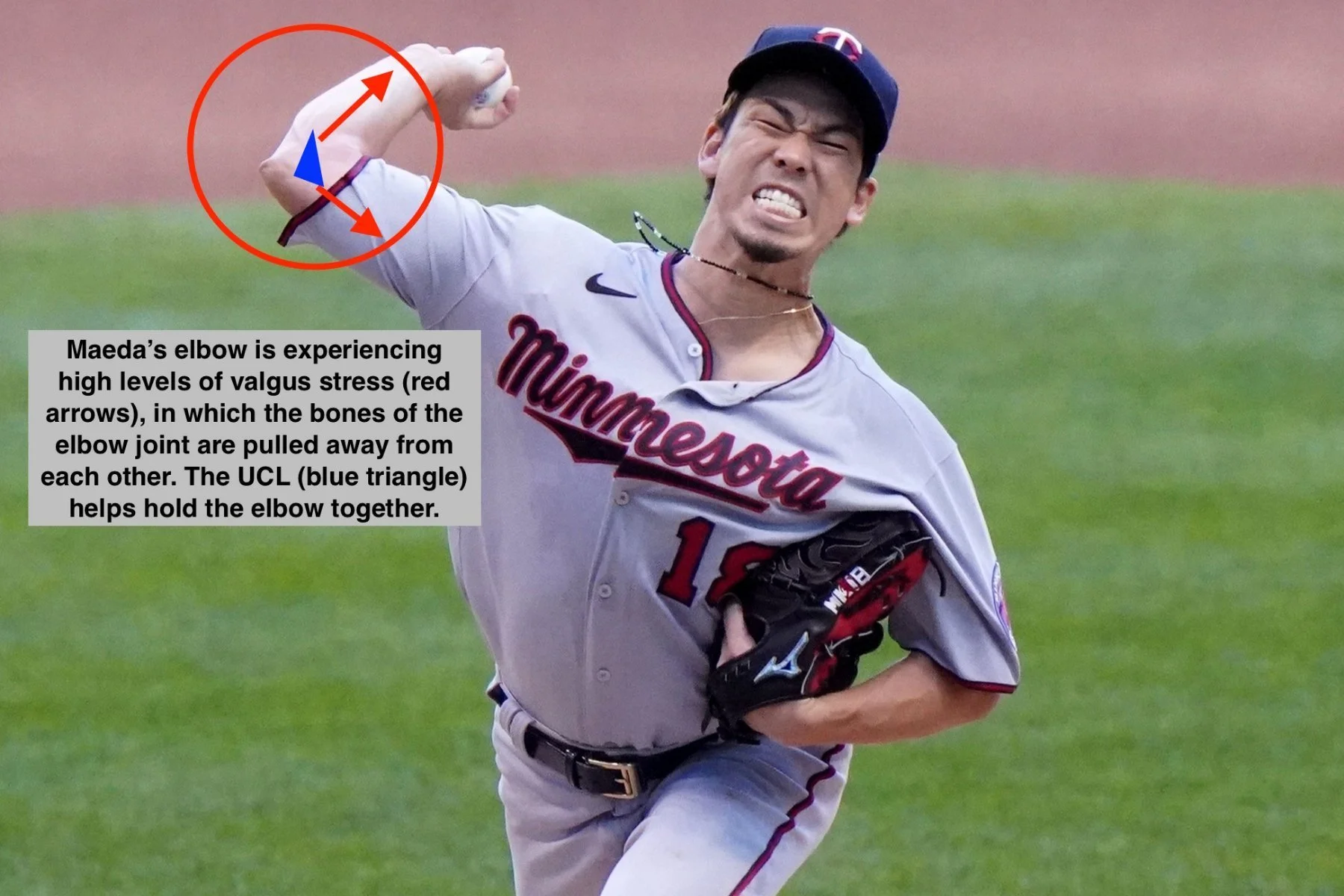Light vs. Heavy Weighted Baseball Training - Which one is the safest way to increase pitch velocity?
As baseball season approaches and the excitement builds for MLB Opening Day on March 30th, one topic that often arises in baseball circles is the use of weighted ball programs to improve pitching velocity. Pitch velocity has become a key metric for assessing the potential of young baseball players, particularly pitchers. To enhance their pitch speed, many pitchers are advised to undertake weighted ball training.
However, the question remains: is this training approach effective for increasing strength and pitching velocity, and is it safe? To answer this question, we have delved into the latest sports-specific research to provide you with a comprehensive analysis of the risks and benefits of weighted ball training.
Throwing Biomechanics
While many people believe that pitching in baseball relies mainly on upper body strength, the truth is that the biomechanics of a pitch stem from the lower body. A pitcher generates momentum for forward motion by utilising the momentum from their wind-up.
Starting with a strong and stable core and lower body, pitchers can enhance their upper body mechanics to increase their pitch velocity. While the foundation of pitching is built from the ground up, improving upper body mechanics can have a significant impact on overall performance.
Source: The American Journal of Sports Medicine
Should we be using light vs. heavy baseballs?
Baseball players often use training ball programs that involve weighted baseballs. While regulation baseballs weigh 5oz, some training balls weigh up to 2 lbs (32oz). Using overweight baseballs is considered similar to resistance training, as it overloads muscles with resistance greater than they are typically exposed to. A similar approach is often seen when a batter is on the on-deck circle and uses a weighted bat to "quicken their hands" in preparation for a faster pitcher. This is a common technique used by batters to increase their bat speed and reaction time to pitches. By using a weighted bat, batters can enhance their muscle memory and coordination, allowing them to react quickly to faster pitches.
Several studies have shown that using an overweight ball (6-32oz) can increase pitch velocity, but interestingly, without any increase in shoulder strength. This has led researchers to believe that using a weighted ball changes the biomechanics of the throw, rather than strengthening the arm. However, for every 1oz of weight added to the ball, velocity decreased, elbow torque increased, and arm speed decreased. While these adaptations can help increase throwing velocity, failure to progress the training appropriately can raise the risk of injury for pitchers.
Due to the number of studies that have shown that weighted ball training leads to an increase of elbow & shoulder injuries, recent research has been focused on the effect of underweighted balls (< 5oz) for this type of training.
Using underweight balls has been shown to enhance pitching velocity by promoting fast twitch muscle patterns. Theoretically, a lighter ball enables pitchers to concentrate on boosting the speed of their arm movement, which can then be transferred to throwing a regulation-sized 5-oz ball, resulting in increased arm velocity.
While the use of underweight balls may offer benefits to pitchers, it's important to note that the training must be appropriately progressed and that overuse of any training method can increase the risk of injury.
Source: Twins Daily
So, how should you adjust your training program?
To optimise your training program and avoid injury, it's important to consider both the benefits and risks of using underweight and overweight baseballs to increase pitching velocity.
As mentioned, increasing ball weight changes the mechanics of the pitch. Due to the interaction of the lower extremities and core during a pitch, it’s important to look at all the components of the movement. The pitching motion should not just be thought of as an upper extremity movement, but an integrated motion of the entire body.
To build a strong foundation and reduce the risk of injury, coaches should look to incorporate deep core exercises, unilateral and bilateral lower body resistance training, and agility work to strengthen the lower components of the pitching motion. They should also focus on pacing, regularly monitoring stress and workload, and avoiding excessively heavy balls weighing more than 10oz.
When it comes to adding weighted balls into training programs, coaches should focus on appropriate pacing, regular monitoring of stress/workload, strengthening the entire kinetic chain, and avoiding excessively heavy balls (above 10oz).
Bowman EN, Camp C, Erickson BJ, Freehill MT, Smith MV, Madia E, Matthews M, Simister S, Wheelwright C, Ishikawa H, Chalmers PN. Most High School Baseball Pitchers are Using Weighted Ball Throwing Programs to Increase Ball Velocity: Cross Sectional Analysis of US High School Pitchers, JSES Reviews, Reports, and Techniques. 2023. ISSN 2666-6391. https://doi.org/10.1016/j.xrrt.2023.01.005.
Erickson BJ, Atlee TR, Chalmers PN, Bassora R, Inzerillo C, Beharrie A, Romeo AA. Training With Lighter Baseballs Increases Velocity Without Increasing the Injury Risk. Orthop J Sports Med. 2020 Mar 26;8(3):2325967120910503. doi: 10.1177/2325967120910503.
Melugin HP, Smart A, Verhoeven M, Dines JS, Camp CL. The Evidence Behind Weighted Ball Throwing Programs for the Baseball Player: Do They Work and Are They Safe? Curr Rev Musculoskelet Med. 2021 Feb;14(1):88-94. doi: 10.1007/s12178-020-09686-0.
Seroyer ST, Nho SJ, Bach BR, Bush-Joseph CA, Nicholson GP, Romeo AA. The kinetic chain in overhand pitching: its potential role for performance enhancement and injury prevention. Sports Health. 2010 Mar;2(2):135-46. doi: 10.1177/1941738110362656.



